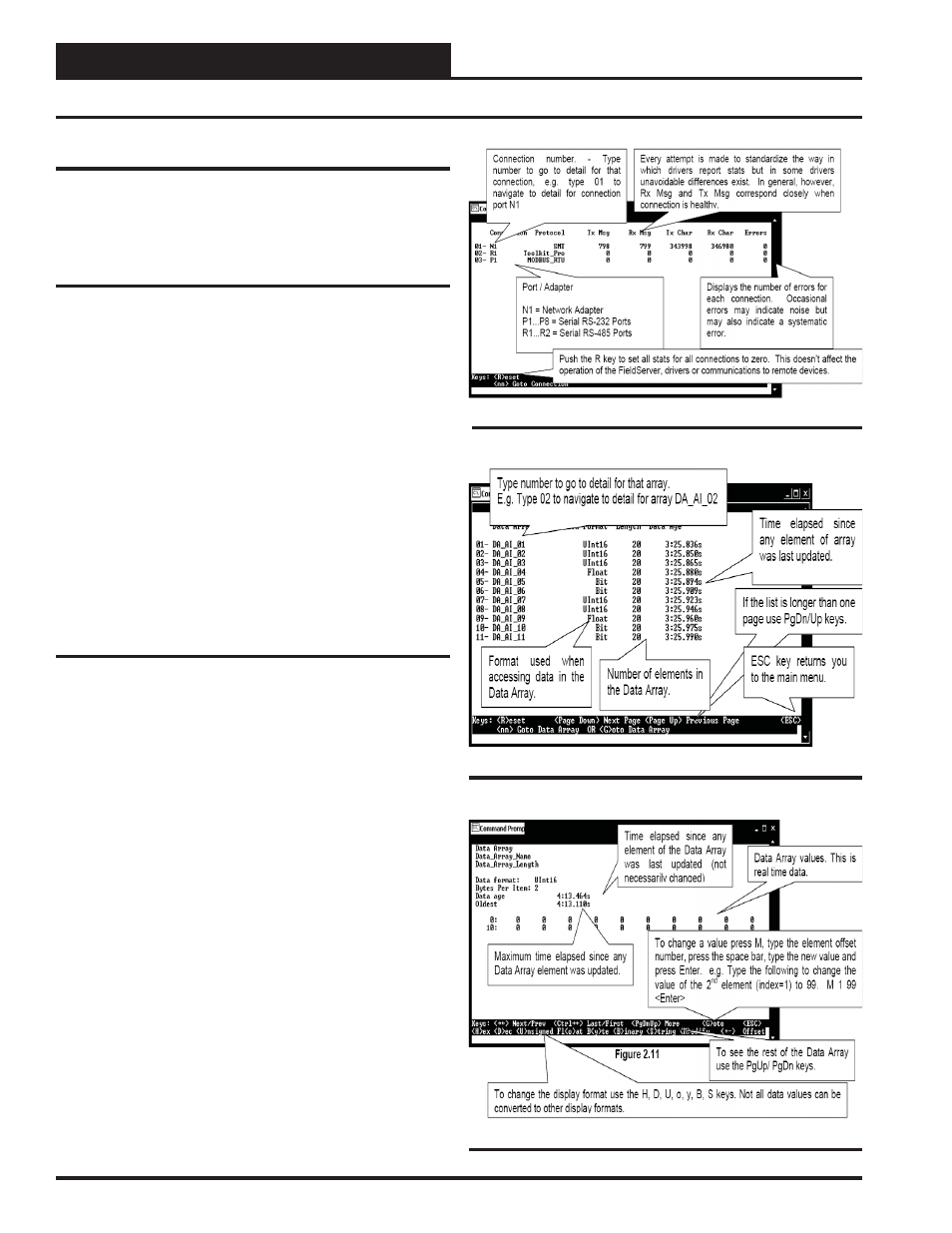Using ruinet, Pt-link ii lon, Technical guide – Orion System PT-Link II LON User Manual
Page 16: Pt-link ii interface 16, Verifying proper communications, Verifying proper values

PT-Link II LON
®
Technical Guide
PT-Link II Interface
16
Using RUINET
Figure 23: Data Array Overview Screen
Figure 22: Connection Overview Screen
Figure 24: Data Array Detail Screen
Using RUINET
Before continuing with the troubleshooting, make sure the PT-Link II
is connected correctly and the RUINET software is installed, running,
and functioning correctly.
Verifying Proper Communications
From the RUINET Main Screen, press
to go the Connection
Overview Screen. This screen supplies information on communication
between the PT-Link II and remote devices. A number of aspect screens
are available, and some of the aspect screens have more than one page.
Use the space bar to toggle between aspects and use the
and
keys to toggle between pages of the same aspect. The Connec-
tion Overview and Settings Aspect Screen is shown in Figure 22.
The main purpose in this screen is to verify that messages and characters
are being transmitted and received. In addition, it shows the number
of communication errors. If the PT-Link II connection “03” is the
protocol connection, verify that is communicating appropriately. If it
is not, check that the PT-Link II LEDs are working properly, the unit
is wired correctly, and the PT-Link II is confi gured correctly. If the
number of errors is constantly increasing, move to the Error Screen by
pressing the
3 times to fi nd out the cause of the errors.
Use the
and
keys to toggle between pages of the
Error Screen.
Verifying Proper Values
To verify that the correct values for each unit are being communicated
to the PT-Link II , move to the Data Array Overview Screen. To get to
the screen, press
from the RUINET Main Menu. See Figure 23
for screen details.
In the Data Array Overview Screen (Figure 23) you will be able to see
the data arrays of all the units connected to the PT-Link II denoted by
an array name “DA_XXX_IY”—Y being the address of the unit minus
one. The Address of the unit is determined by a set of dip switches.
To view the values being communicated from a specifi c unit, move to
the Data Array Detail Screen (Figure 24) of the unit by entering the
number under which it is listed. For example, for the unit listed in the
third position, enter
<03>
.
To understand what each value means, look at the Data Array Tables
for the desired unit type, VCM-X, SA, or VCM. You can change the
writable values from this screen by using the modify command. To use
the modify command, press
from the Data Array Detail Screen
and then enter the Offset you want to change followed by a space and
the new value.
Example: To change the Cooling Supply Setpoint to 60 in the VCM, press
, enter
<58 60>
, and then press
. This could be useful to
prove that the unit can take and keep the setpoints properly.
